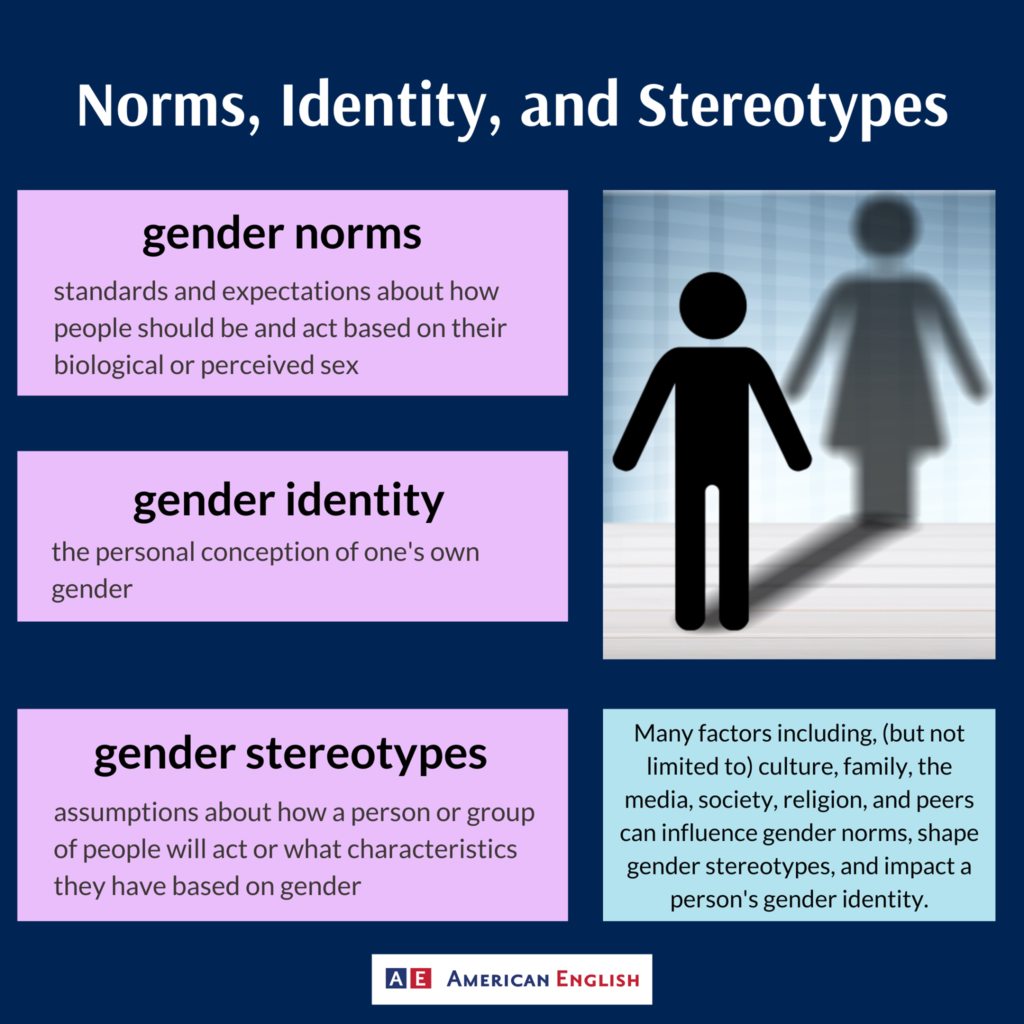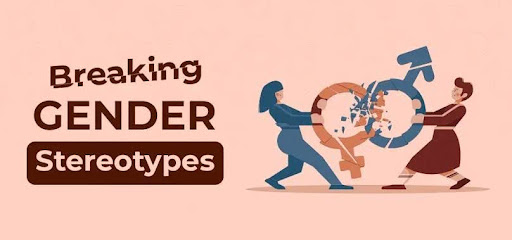“Girls should play with dolls; while boys play with trucks.”
“Girls should be directed to like red and pink; while boys should favor blue and green.”
“Boys should not wear clothes linked with “girl colors” and girls shouldn’t be interested in Science, Technology, Engineering, and Mathematics (STEM) courses.”
How and why did we come about these assumptions? Assumptions of how members of a gender should act those fixed and simplistic ideas of how men and women should be. Should behaviors be guided by “nature”, or carved out by “nurture”? If we say that stereotypes ultimately define how things should be; how should we then feel if such stereotypes aren’t true for us?
In this blog post, we will explore the nooks and crannies of the term, gender stereotypes. By the end of the post, you will have a solid understanding of where these gender stereotypes come from, what happens to those it doesn’t fit, and ways in which we can challenge and overcome these stereotypes in our everyday lives.
Eradication won’t be an easy feat as you might think, because gender stereotypes are so tightly knit into our society; however, it’s important we dive deeply into some details.
What Are Gender Stereotypes?

In a strict sense, gender stereotypes are preconceived and popular views about how people of a particular gender should act or behave — the traits they should possess, and the mindsets that they should imbibe. In other words, gender stereotypes are those distinguishing features that society instinctively attributes to groups of people to identify them according to gender.
Besides, we can relate gender stereotyping to sexual stereotyping; which involves associating girls and boys with separate and, at times, opposing sets of characteristics.
In summary, gender stereotypes are those preconceived ideas that mostly have negative influences on the way we see other people, interact with them, and respect them. Moreover, these gender stereotypes are limitations on the people they target; they are not necessarily suited to their targets and they make it harder for such people to be their true selves.
Why Do Societies Subscribe to Gender Stereotypes?
Most times, gender stereotypes are generalizations. Even when they appear true, they are not always true. The real danger lies in the fact that we take them as the norm. and make them universals. For the most part, they are just inaccurate beliefs passed on through a society or community; they represent only a minority of real men or women, but when they continue to spread in the society; they gain widespread acceptance as norms.
That’s where the problem lies; the fact that we move from recognizing these gender stereotypes as observations about how things often are; to regarding them as guidelines for how things ought always to be. This is how we got here!
Humans, by nature, love to recognize and align with patterns. This ingrained instinct — the ability to categorize and profile — is sometimes good for the survival of people. However, in cases where it is overly relied on and allowed to cloud one’s judgment, it becomes harmful. Sadly, this is the case with gender stereotypes.
Understanding the Origins of Gender Stereotypes
The gender stereotypes predominant today have their stems deeply rooted in the heart of society. Let’s start with the family, which is the basic unit of every society. Here, children learn by observing and imitating those around them; their immediate family members, friends, relatives, toys and games, school, media, and society.
At this level, the children’s behavior and psychological traits are groomed —from confidence to self-esteem, empathy, and other social skills — along with their existing opinions of how women and men should live their lives. These are decisive for them and their future since it is how they construct their own identities.
Furthermore, it is important to note that many parents attribute great importance to their children’s gender; even before the kids are born. As the kids grow, they exhibit specific gender-based characteristics. Besides, a great part of the stereotypes stems from how children are regarded by parents.
Next, we move to the institutions of learning. Here, children learn how to socialize further. It’s important to note that experiences and interactions amassed here greatly shape how many kids socialize with their mates and acquaintances in mainstream society as adolescents and adults.
By definition, socialization is the process by which children learn to assimilate and imbibe core values and norms; how to live in society, and ways they acquire knowledge appreciably. In schools, girls and boys are often encouraged to engage in different sorts of activities and games. For example, girls are encouraged to appreciate artistic activities, like music and arts; while the boys are steered toward sports and adventures. This is termed “differential socialization.”
Why is this so?
Many believe it’s as a result of the tendency of boys and girls to behave differently. Likewise, in mainstream society, a large percentage agree with these established preferences based on societal norms,
To clarify, society, which is the seat of civilization, considers gender as being binary — a state of one of two mutually exclusive conditions, You are either male or female; feminine or masculine, thereby ignoring the fluidity (flexibility and creativity) of gender identities.
In addition, people pass down these stereotypical preferences from generation to generation through differential socialization. How is this so? Through traditional roles such as “mother and housewife” for women, and “father and provider” for men. Most times, parents may not even be aware that they are indirectly teaching their children these stereotypes as they educate and nurture them.
A Closer Look at Common Gender Stereotypes

Let’s take a closer look at some common gender stereotypes that society attributes to boys and girls based on the stages of human development:
As kids; society says:
- Girls only like role-playing and taking care of dolls, while the boys are fond of playing with cars and trucks and building stuff.
- Girls are more manipulative, and liable to toy with other people’s feelings, while boys are more direct and violent.
- Girls are more docile and inclined to please others, while boys are not as good at listening to instructions and can be less attentive.
- Girls are interested in fashion and arts, while boys love video games and sports.
- Girls do better in school, while boys are more likely to get in trouble in school.
- Girls are perfectionists and do better at housework while boys are more disorderly and less meticulous in doing household.
You might have heard people defend stereotypes like this with statements such as “But that’s how it is in most cases,” or “Society came up with these stereotypes after several observations”.
People who do such choose to be oblivious to the individuality of humans and how stereotypes are the foundation for segregation, discrimination, and bullying of people who may not conform with the norms.
Meanwhile, as the kids grow older, it changes to the following:
- Boys should engage in sports and refrain from artistic or “girly” pursuits, while girls should be thin and beautiful to make themselves more appealing to men.
Boys are expected to use violence and aggression to prove their manliness, while girls should be well-behaved, and composed.
When the kids become adults, the gender stereotypes mature with them as follows:
- Men who are not aggressive and/or assertive are not manly.
- Victims of partner violence are weak if they choose to remain in the relationship.
- Assertive women are unfeminine and are “bossy”.
- Women are natural nurturers; men are natural leaders.
- Men who spend time with their family are less masculine and not likely breadwinners.
- Women don’t need equal pay because they can be supported by their husbands.
- Women with children are less devoted to their jobs, and women who take office roles are less devoted to their children.
Finally, as these sets of adults mature in society, they revere the following:
- Play areas should be divided so that, on one side, girls have access to dolls and can engage in role-play (e.g. cooking), and on the other side, boys should have access to active games (e.g. playing with toy cars) and building activities.
- Girls should receive more toys whose appeals are based on physical appearances; while boys should be given recreational games that encourage active play.
- Adults should be more likely to question a young girl if she does not seem well; while they should try not to embarrass young boys by asking about their feelings.
- Adults should readily accept the fact that girls may engage in activities and develop skills generally considered to be masculine; while boys should often be discouraged from taking an interest in activities that are said to be for girls.
What is Gender Stereotyping and its Effects?
It’s noteworthy to understand that gender stereotypes negatively shape self-perception, and affect and influence well-being, attitudes, and relationships, while shaping participation and practices in the workplace.
For example, in a school setting, gender stereotypes can affect a young person’s classroom experience, academic performance, and subject choice. Gender stereotyping is the reason female students are considered as less talented than male students in some areas of science such as engineering.
In the workplace, gender stereotypes influence the kind of profession people opt for any employment decisions, even when someone can perform better at other jobs,
Likewise, these stereotypes shape the way men and women try to appear and engage others, both in romantic relationships and work relationships. Interestingly, mainstream society gets the view that professional women are perceived as less competent after they become mothers, while this is not the case for men who become fathers.
What are the consequences of gender stereotyping?
Firms are generally less willing to hire, educate, or promote working mothers than working fathers or workers without kids.
Besides, gender stereotypes influence upbringing in the family setting and worsen the current gender equality in society today. How so?
From an early age, parents directly or indirectly teach their children gender stereotypes, which these children then imbibe as their core values and beliefs, shaping their judgment of and attitudes toward other people.
Let’s dive into some details!
When we impose rigid ideas of masculinity and femininity on our children, we are limiting their potential and causing real harm to them, harm that will likely manifest later in life.
Similarly, kids may feel that certain tasks and responsibilities in school are reserved for a specific gender. For example, a girl assumes the task of cleaning up after a laboratory activity falls to her even if the teacher does not give any instructions to do such. That is, some students have unconsciously learned to assume certain responsibilities as a result of gender stereotyping; more like particular gender types are associated with specific forms of competency.
Aside from the above-mentioned points, today’s media assumes a far greater role in influencing early and continuous social development in young boys and girls. In other words, gender stereotypes portrayed by the media affect every part of teenage and adolescent life. These stereotypes usually contribute to poor mental health in young people, leading to higher male suicide rates, low self-esteem and issues with body image among girls, a culture of toxic masculinity and violence against women,
Furthermore, those who don’t conform to the ‘traditional roles’ of society struggle to feel accepted and integrated, It also limits socioeconomic growth and encourages poverty.
As a result of gender stereotypes, women are more likely to be:
- restricted to a smaller range of trades and professions.
- Paid less for work of equal value with men.
- Less likely to hold positions of power in politics or the work domain; and devote more time to family responsibilities.
Gender stereotypes also affect the way we search for romantic partners and the qualities we seek in them. Are you familiar with the question “What’s your spec?” It’s amusing to see people describing their ideal partners. The men claim that they are attracted to women who are as intelligent as they are, or more intelligent than they are. However, when they come in contact and are actually interacting with those specific individuals they crave, they might find them less attractive because of societal generalizations that intelligent women would always want to outsmart men in relationships.
Judging from these examples, the harmful effects of gender stereotypes in society can’t be overemphasized.
Gender Stereotypes: Are They All That?
“Women are from Venus; men are from Mars”, this is a phrase that is commonly used to explain the evident differences in the way men and women behave, feel, think, and act. Indeed, there is no denial in the assumption that there are differences between men and women in many life domains.
However, the issue lies in the fact that the observed differences are used to prescribe the way men and women should be and how they should behave in different walks of life; how they should be treated by others … that’s the problem.
Even so, it’s important to note that gender stereotypes, to some extent, reflect some positive assumptions about men and women such as their inherent biological differences (the large physical strength of men; and the ability of women to give birth, coupled with the care for others which is greater in women than in men), hormonal levels which impact peculiar behaviors (emotions and behaviors that dim them fit for different types of activities: men are prone to making more risky choices like gambling and addiction; while women are more cautious in these situations), and so on.
As mentioned earlier, men and women are known to dominate certain occupations by virtue of their innate behaviors and emotional makeup; i.e., men are plentiful in defense roles, while women assume more medical roles and administrative duties. Moreover, when men and women do the same thing, they tend to do them in different ways; these are as results of the impact of biology as it’s the main factor in creating behavioral gender differences.
Unfortunately, these biological differences are what set the stages for shared beliefs about the characteristic traits and abilities of women and men; and in the long run, instead of appreciating their biological distinctions, society today now evaluates individuals on group-based expectations; not individual merits: this is how we got here; the implications of categorizing people by their gender ( which offers an oversimplified view of reality; reinforces perceived boundaries between women and men).
In general, gender stereotypes are helpful when there is a need to make quick estimates of how unknown individuals are likely to behave or when trying to understand how large groups of people generally differ from each other.
However, these very same functions make stereotypes much less helpful in estimating the exact potential or evaluating the defining characteristics of specific individuals; as such, even though gender stereotypes help in making real-time assumptions about gender characteristics, in the long run, they continue to exaggerate the perceived implications of gender for role differentiation and social inequalities … which is quite harmful.
Breaking Free: Challenging and Overcoming Gender Stereotypes

As a rule of thumb, we must all understand that gender is not fixed and should not prevent girls or boys from participating in an activity or making varying life choices … from scratch, we must all strive to refrain from accommodating unconscious biases.
What is an unconscious bias?
In a strict sense, an unconscious bias can be defined as a bias that we are unaware of; assumptions that are out of our control. Everyone harbors them. They are influenced by our upbringing, cultural backgrounds, personal experiences, and so on.
For example; in a classroom, girls are more likely to be praised for being well-behaved while boys are more likely to be praised for their ideas and understanding. Likewise, a disruptive girl may encounter more criticism than a boy who exhibits similar behavior, while quiet boys are often overlooked in classrooms.
Importantly, when we assume these thoughts, we shouldn’t feel racist or sexist (even ageist); as these thoughts are unconsciously influenced and learned. The true beauty lies in us finding ways to curb and reduce our influences while engaging people and making core decisions.
In today’s society, gender stereotypes have their tap roots deeply embedded in the core of prevalent societal norms; if we are to reduce their impacts and influences, we have to start with the form of education we instill in our young kids as distinct families … remember, when the family isn’t in good order; the society can never be right.
Education, for the most part, plays huge roles in fine-tuning the characters and mindsets of young kids; so, offering one that is free of gender stereotypes is actually important. As parents, we must suggest diverse activities, experiences, reading materials, and toys for our growing boys and girls; making sure there are no distinctions as to what might be appropriate for either gender. These have been known to enable young kids to develop the full range of their competencies and abilities.
For example, a girl whose friends and family, at all times, encourage quiet or artistic activities will be unlikely to develop sports skills; just as a boy who is always told to be strong and brave … will find it very hard to express his emotions when there is a need to. As such; the importance of early, insightful experiences during the developmental stages for young kids can’t be overstated.
Furthermore, at the family level, it is important to distribute tasks fairly among children; they should not be asked to always perform tasks typically associated with their gender, such as taking care of younger children (girls) and moving heavy objects (boys).
We all know that as a result of differential socialization in today’s society, books and toys for girls suggest roles associated with family responsibilities and appearance; while those for boys usually have to do with action, conquest, and exploration (Please note, offering an education free of stereotypes does not mean taking away all “boys’ toys” and “girls’ toys,” such as Barbie dolls or Lego blocks).
Moving forward, we should actively encourage children to make purposeful choices usually associated with the other gender.
In addition to the above-mentioned points, providing reading materials featuring a diverse range of personalities that do not illustrate “established customs” would go a long way in refining the minds of growing kids. These, for the most part, would show them (children aged 3 and above) that they can hone their critical senses as they grow and develop into the adults of tomorrow.
Overall, in breaking free from gender stereotypes, we have to be conscious of these:
- Emphasize accomplishments rather than physical attributes.
- Encouragement and avenues to learn skills based on what interests one.
- Equal participation in household chores.
- Acknowledgement of all genders’ contributions to history and national developments.
- Zero tolerance for violence from anyone regardless of gender.
- Recognition of the role of both men and women as parent figures.
- Guarantee of work opportunities in all areas of interest, regardless of gender expectations.
- Zero tolerance for gender bias in the society as a whole.
- Prioritizing mental health issues, regardless of gender.
- Criminalizing marital rape (women should not be perceived as sexual property of men).
- Investigating, prosecuting, and sentencing defaulters of sexual violence.The list goes on!
Embracing a Future Without Gender Stereotypes
If we are to build a future society without gender stereotypes, there are some old hides we have to shed as of today (some examples go as follows):
- One group should not be preferentially treated compared to the other. Besides, if one group is being disadvantaged, then positive action should be taken to address it instantly.
- Unconscious bias and normalization of stereotypes imply that there are often unspoken barriers. Simply informing boys and girls that they are free to make different life choices, without addressing these barriers, is not sufficient. We must solve those issues if this future without discrimination, we dream of, is to be sustainable.
- “Boys and girls are just different!” There is overwhelming evidence that suggests this is not the case: understand that there are more differences within groups of boys and groups of girls, than there are between boys and girls.
Moving forward, there are a few simple things that you, as an enlightened adult, can do to raise children and young people in the same way regardless of gender.
First, you must remember that you are a role model to your kids and they imitate you … a kid who sees a woman always doing the same household tasks will tend to believe that women are solely responsible for such work.
So, as caretakers of rapidly growing wards; it’s important to stimulate their minds positively by suggesting diverse activities, experiences, reading materials, and toys … and try not to make any distinctions as to what might be appropriate for either gender.
In the long run, these will enable your wards to develop the full range of their competencies and abilities.
Moreover, it’s just too important to groom young kids in ways that they can achieve their educational, vocational, and social goals regardless of their gender.
During the formative stages, they should be implored to meet professionals from various walks of life; different role models abound: nurses, lawyers, engineers, business folks, etc.
In addition, they must be encouraged to choose activities or adventures based on their own interests, not on gender stereotypes; so they know that all options are open to them and everything is possible, regardless of one’s gender.
Overall, do not hesitate to act if you witness stereotypical situations or comments amongst young children … it’s crucial not to sit idly when one hears a child say things like, “Brooms are for girls”, or “Video games are for boys!”
Instinctively, ask questions likely to make the child think, such as:
Why should girls do most or all of the housework?
Do you feel all girls are interested in these?
Do you believe that all boys are like that?
Nathaniel Ashaye is a content writer with foci on “matters arising”. He believes he was born to stand out, and not fit in. He serves as a volunteer on BWB’s “swaggalicious” Directorate: Media and Communications.

